Ghazni – From the Glorious Past
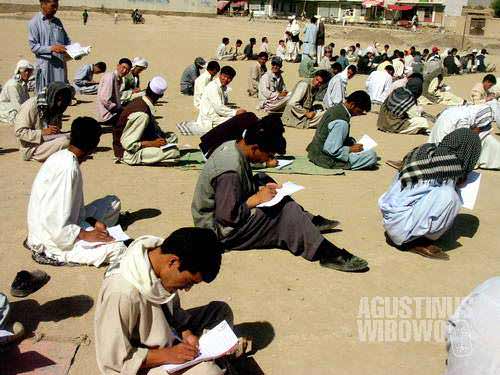
The glorious past has gone
Ghazni is the capital of province of the same name, located north of Zabul province on the Kabul – Kandahar highway. The altitude of slightly more than 2000 m guarantees the temperature in Ghazni is cool. At this moment, Ghazni is among the riskiest provinces in Afghanistan, where Taliban attacks happen in regular basis in the districts of the province. But as everybody tried to convince, the city is a safe place.
Shehr Ahmad Haider is a Pajhwok journalist covering the news of the area. His office is a tiny office in a hotel near the bus station to Kandahar. There are two computers in his 3 x 5 m room, and his main weapons of getting news are: two sets of mobile phones and a desktop phone. He never meets Taliban, despite that most of his news dealing with Taliban. Interviews are done through phones. But he is not idle. In fact, to get at least five news per day he has to make many telephone calls and some visits to the Internet Cafe, the only one in the city and costs beautifully at 70 Afs (1.40 US$) per hour.
Haider’s close friend, Nikzat, is working for a radio in Ghazni, Radio Ghaznaviyan. As a reporter he also relies very much on mobile phones, also tape recorder for interview. He goes often to the field. Both of Haider and Nikzat are 35 years old. Haider has a journalistic background. He was graduated from journalism faculty of a university in Kabul during the reign of Najibullah, the Communist leader of Afghanistan.
Both of them were welcoming. Haider was contacted by Pajhwok and requested to provide me some assistance. But their assistance might be redundant. Just as when I arrived Haider was talking about the necessity of getting permit as I was foreign photographer and the police might make some problems with me. I didn’t see the importance of that. But Haider insisted. I have some experiences already with Afghan bureaucracy, and not so keen to get involved if not necessary. Nikzat insisted, “It will only take 5 minutes. Or even less, 3 minutes.” I doubted. But nevertheless, they have convinced me to do as what they thought, as Haider said that the heritages of Ghazni were protected from looters and permit from the police was necessary.
It was indeed a fruitless attempt, a vain three hours under the fierce sun heat and the threaten of my hungry stomach, Nikzat and I was trying to get permit from the officials, who also don’t know what kind of permit we were requesting. At frist Nikzat took me to the Ministry of Culture (Vezarat e Farhang) and the vice director said that the director was in the governor’s office. Nikzat still tried to insist me everything was easy, it would be less than 5 minutes. So we rushed to the Governor’s Office. We met the director of ministry there, and he said that the process would be easy. He doesn’t look like a director anyway. But the governor does have the aura of a leader, with his traditional flat Pakol (Pashtun hat) and shawl. He greeted me and spoke very fast Farsi that I couldn’t catch. But it seemed he showed his unhappiness with news about their office that was broadcasted by Nikzat’s radio. Nikzat left the office with plain expression. I knew he was insulted. But he still, with his confidence, saying that the letter of permission will be obtained soon.
We went to the Police Station (???). It was a huge yard inside a compound surrounded by thick wall. The police commander was also busy with some people applying for passport, and our sudden visit, with a request of a permission letter of protection gave him a surprise, as he said that protection would be always provided without letter. He shook our hand, a sign of dismissal. I still couldn’t believe that Nikzat was still confident to get the letter, God knows what the letter would say about. I told him I was terribly hungry and I have been to many historical places in Afghanistan, and never have I been asked a letter saying that I was photographer. We went back again to the Ministry of Education, just to be asked to come again the day letter.
Now Nikzat was convinced that no letter was required. I told him many times already, but it was only his personal experience to make him realized.
With his motorcycle he took me to the Tapa Sardar, the Buddhist excavation in Ghazni. It is located outskirt of the city, near the highway. The Chinese pilgrim, Tang Hsuan Tang visited the religious site in 644 AD. There supposed to be a huge stupa on the hill, accompanied by two chapels with beautifully decorated walls. But almost nothing is left now. The guy in the Ministry of Culture said that it was Taliban who destroyed everything there. “The glorious past has gone.” It was sad. Afghanistan has lost most of its thousands years of historical heritages during the three decades of wars. The glorious centuries were wiped only in some years of stupidity.
Not far from the Tapa Sardar hill I saw colors on the plain brown steppe. The rioting colors reminded me to the costumes of Rajasthani women in the Thar desert. But here is Afghanistan. The women were attending wedding ceremony, and they were unveiled, dancing on the plain happily. I was told not to take photos towards the woman direction. Here, women are not subject of photography, and I respected their culture. So I kept the beauty of colors and movement in my mind. But the men were more than happy to be photographed. They were performing Atan dance, the dance to be performed in wedding ceremonies in Afghanistan. The men were dancing encircling a car (I don’t know why), and children were sitting in a circle watching. But my existence distracted the children, and they went wild, pushing and throwing stones, just to grab the attention to be photographed.
The main landmark of Ghazni is the two minarets standing in the middle of nowhere. The minarets are the monuments erected by Sultan Mas’ud and Sultan Bahram Shah. Not far from the minarets there were junks of unused tank and war vehicles. The hills near the minarets are heavily mined, obviously this plain was once a frontline of wars. The de-miners from OMAR (Organization of Mine Clearance and Afghanistan Rehabilitation) were busy in mine surveying, signing the areas with white and red stones.
Shahad Mir was a commander, or better said, a warlord. He was involved in the wars and he was a guerilla commander under Ahmad Shah Massud, the lion of Panjshir. He was very proud in telling his brave past as war commander. He was visiting the Ghazni for pilgrimage purpose, and more than happy to be photographed near the remnants of the tanks. He climbed a tank in less than a second; his speed doesn’t show his 70’s age at all. He was very active for his age. And the tanks had brought back his memory of his glorious past. Afghanistan is a country of many warlords, and in the deep interiors, it is the warlord who posses the rights of everything in his area. Shahad Mir was one of them.
Ghazni is a pilgrimage site, with many saints were buried here and people come to visit their tombs to receive blessings. Not far from the bazaar there is the mausoleum of Sana’i, once a great poet. In the bazaar there are some other mausoleums, and people with disease came here in hope to get well. They believe, as in Pakistan, that visiting tombs of holy men will give the miracles for all hardships of live. I saw an old woman being taken by a man to visit the mausoleum. The woman could do nothing, but laying on the ground and screaming, crying. She lost her conscious. The man prayed next to the tomb of the holy man, repeat myriads of words. The same scene I saw again in the mausoleum of Sultan Mahmud, once a great king of the area. Women brought a baby who got epilepsy to the mausoleum, and the father touched a stone taken from the tomb to the baby head. The stone symbolized Sultan Mahmud himself, and he wished the power of the stone from the tomb would bring the miracle to his sick son.
Despite of the glorious history and glimmering-but-dusty old town, Ghazni is a modern city. There are some schools, separated for boys and girls. There are more students than the schools can handle. Students had to sit under the sun to have their examination, reminded me to the prisoners being punished under the sun during their service in the jail. The classrooms are too crowded, and for exam day like this, teachers need to put the boys on the field so they can sit sparsely and thus prevent the cheatings. The exam is delivered orally by the teacher, instead of using problem sheet. It more resembled like a dictation test to me. Or maybe it was.
The life in the city is quite normal anyway, and people were less tensed as in Kandahar. But outside the city, Ghazni province is not a safe place to wander around. The wars with Taliban are common, and it was daily news for reporters like Haider and Nikzat. Currently there is war in Moqor, the second city of the province. I visited the hospital together with Nikzat, as he was confirming the news of the day. There was war with the Taliban, and 4 people were wounded: 2 policemen and 2 civilians (in Farsi: malesha, I misunderstood the victims were Malaysians). They were terribly wounded and the facility of the hospital is very limited. But I saw pride in their eyes, being a victim, and to be photographed. Maybe it was a pride of being martyr.
I am sure, the glorious past is still there. It is not gone yet. It will come back to the country. I am sure.




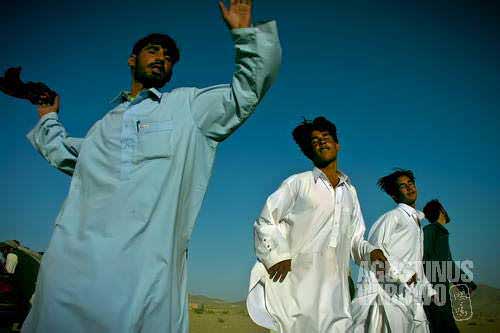
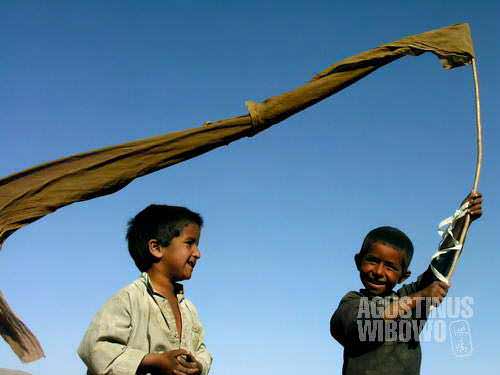
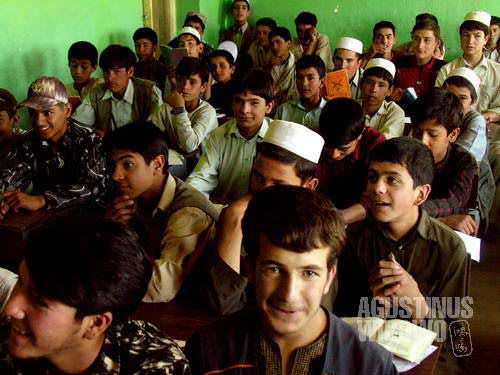
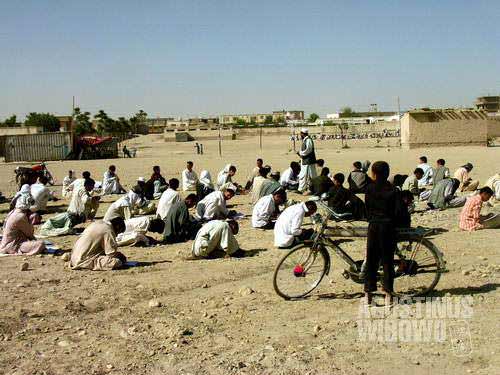





Yes, it is a shame that so much heritage was destroyed simply to an extreme ideology. It is rather similar to the destruction within China and Tibet that occured because of Mao’s “clean sweep” approach. 🙁